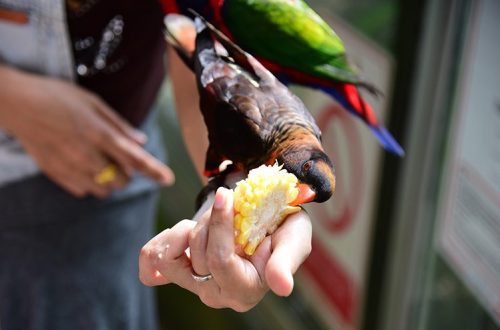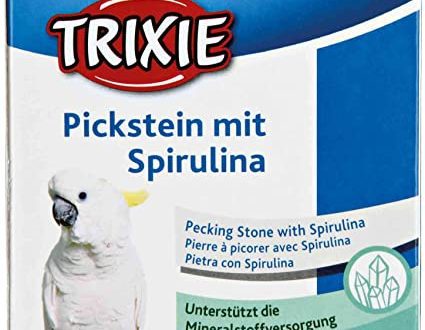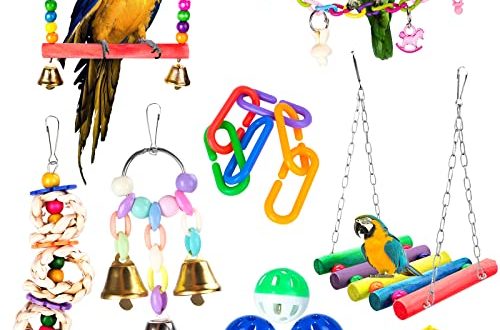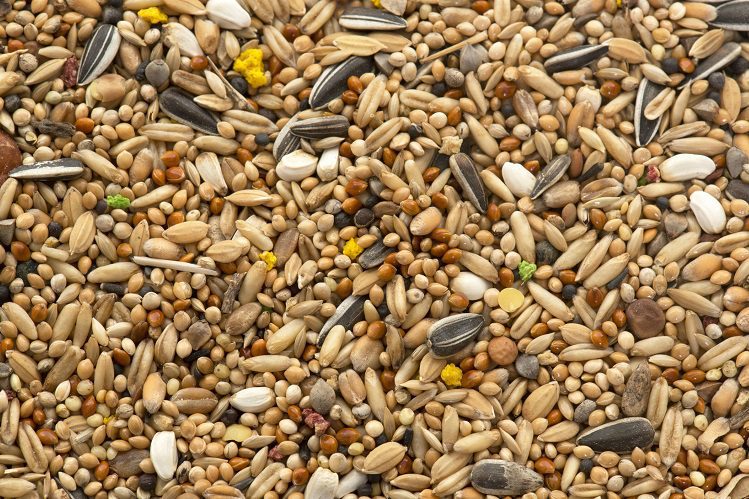
What to feed cockatiels
The Corella parrot seemed to have stepped out of a picture of life in a tropical paradise, where ripe fruits sway on the branches of trees, and you can hide from the scorching sun in the shade of palm trees. But if this feathered handsome man is your pet, how to feed the Corella parrot at home? We will tell you what a ready-made grain food for a pet should be like and how to supplement the diet with fruits, vegetables and other healthy foods.
In the wild, this nimble crested parrot has a varied diet, but for an urban dweller, ready-made grain food (Versele-Laga, Fiory) is an excellent way out. It is easy to purchase, easy to store, it is satisfying, there is enough food for a long time. We urge you to consult with a veterinarian or veterinary nutrition specialist before choosing a food. Choose high-quality food and it is for cockatiels, food for other types of parrots will not work.
In high quality food you will find several types of millet, canary seeds, striped sunflower seeds, white sunflower seeds, linseeds, rapeseed, oats, rice, buckwheat, peanuts, corn. The grain mixture must have at least 10 different ingredients. Additionally, the food is enriched with a vitamin complex, selenium, omega-3 for heart health and shiny plumage, chelated minerals to strengthen the musculoskeletal system. Eating this wealth of useful and nutritious foods daily, your pet will receive good health, strong immunity, vigor and well-being. Whoever chooses high-quality food for a parrot saves on trips to the veterinarian.

Pay attention to feed pellets. Cylindrical soft pellets are very convenient to eat with a beak shape like that of a cockatiel. The feed must have a good shelf life and must be sealed. Check the integrity of the package.
Feel and smell the food before feeding your parrot. A simple test for quality and freshness: Soak some food in water. If it is fresh, the seeds will germinate quickly. It is better to store food in a tightly closed container, and not in the original packaging.
High-quality food will lay the foundation for the health and longevity of your ward. Changing food won’t be easy. If your cockatiel willingly eats the option you suggested and feels great, you should not switch to another food. But if, for example, your veterinarian recommends you change your diet, the change should be gradual. Over the course of a couple of weeks, gradually mix in the new food with the familiar one. Make the transition as smooth as possible.
No matter how excellent the food is, it cannot cover all the needs of the cockatiel. Yes, and get tired of eating the same thing several times a day. What to feed cockatiels, besides food? Vegetables, fruits. Parrots love pumpkin, beets, carrots, pears, apples. Grate or hang inside the cage, for example, an apple cut across. In the house there will always be seasonal fruits and vegetables with which you can pamper your ward. Please note that avocado, mango, papaya and persimmon cannot be given to a parrot. Sometimes you can give a parrot a piece of boiled egg, a drop of fat-free cottage cheese.
Every other day or twice a week, you can treat your pet with steamed porridge, sprouted oats. In general, we dilute the grain group of products with creativity.
How to feed a cockatiel parrot to replenish the supply of minerals? Sepia (cuttlefish shell) and mineral stone must be constantly present in the cage. To get the necessary minerals, the parrot just needs to peck at the stone and sepia. If you want to sprinkle the floor of the cage with sand, choose a small shell rock.
Branch fodder is no less important. Suitable branches with a diameter of 1,7 to 2,5 centimeters. There is also a stop list here: parrots should not gnaw branches of oak, bird cherry, poplar, lilac, coniferous trees. Give your pet only treats that you know are safe. It is necessary to collect branches in an ecologically clean area. Suitable branches of willow, birch, apple, willow, linden, mountain ash, cherry, plum. Hang the branches of different trees in bunches so that the parrots can peck them a little bit. Can be hung on a stand or in a cage.
Wild-growing fresh herbs or herbs that you have grown yourself at home in a pot will be a good addition to your diet. Nothing prevents you from preparing and freezing greens and berries for the winter.
An important role in the nutrition of the cockatiel parrot is played by the koposilka. This is not just a pallet with the gifts of nature, in which you can burrow and rustle fun. This is an imitation of searching for food in nature. Let Corella feel like a getter. Shells, bark, dried berries, charcoal, dried leaves of fruit trees, dried herbs, ready-made grain feed familiar to your ward can be poured into the koposilka. The more diverse the filling of the koposhilka, the more interesting it will be for the parrot to look for goodies in it.
It is important for a parrot not only to eat right, but also to consume a sufficient amount of liquid. We recommend staying with filtered tap water. Bottled mineral water may not be suitable for a feathered ward in terms of its salt balance. Fresh water should be available to the parrot around the clock.
Nobody canceled the popular treats for parrots with honey in the form of sticks. With such a gift, you can reward your pet for good behavior or pleasant melodic trills.
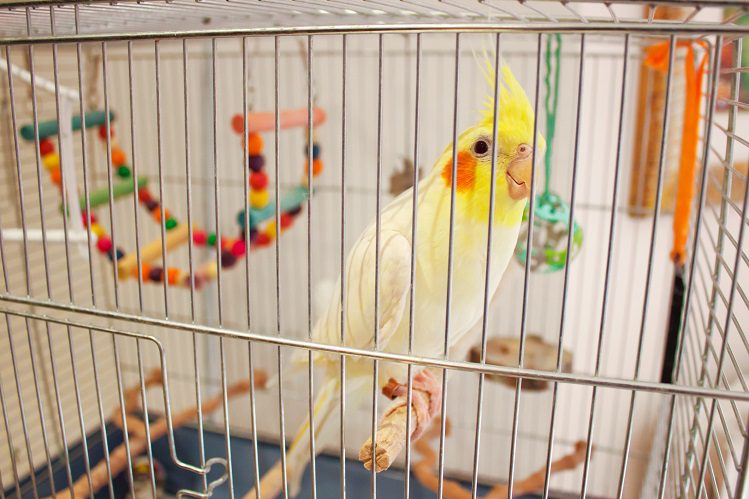
Even if you constantly include seasonal delicacies in your cockatiel’s diet, they can get boring. So that the feathered friend does not lose interest in already familiar dishes, experienced parrot lovers came up with a trick. Change not only products, but also the way they are served. Hung half a pear on a holder in a cage? Tomorrow give a piece of pear from the palm of your hand. Did you put the berries in a bowl? Tomorrow add them to the piggy bank. And so on.
In pursuit of abundance and variety, it is important not to overfeed your pet. An adult cockatiel needs about 30 grams of food per day. It makes sense to feed your pet gradually: breakfast, light snacks, lunch and dinner.
What could be the Corella menu for the day? Divide one and a half tablespoons of prepared food into two servings – a hearty breakfast and a modest dinner. In the morning, hang half or a third of a pear in a cage so that the parrot slowly pecks at it during the day. A few hours after breakfast, offer your feathered friend some grated carrots. Toward evening, you can treat the cockatiel with sprouted wheat, an incomplete dessert spoon of sprouted grains will be enough. If a bunch of branches of an apple tree, birch, mountain ash hangs in a cage, there are sepia and a mineral stone, then everything is fine. You can take this menu as a basis and slightly adjust it from day to day.
We wish your feathered friend to always eat well and be in a great mood!



